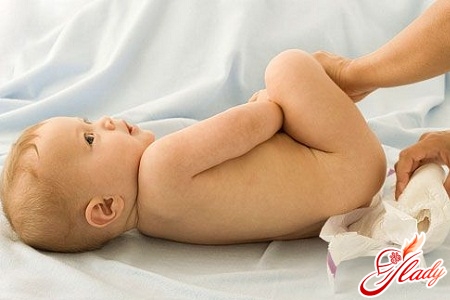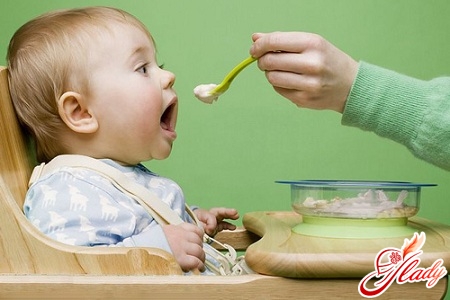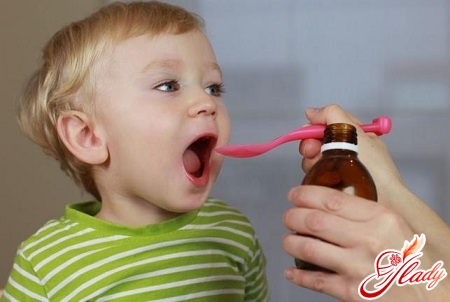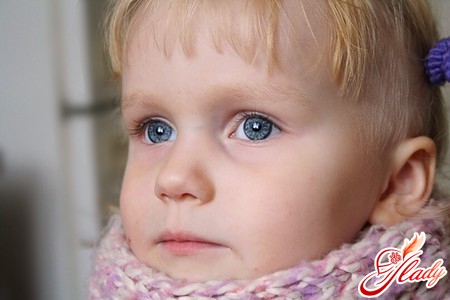 What do young mothers talk about most often?Did you smile? Then you guessed it. Specifically about baby feces. And there is nothing surprising about it – the baby is still so small that he cannot tell his parents how he feels. And that is why parents have to be especially meticulous – they keep the child’s weight, diet and, of course, feces under strict control. The color and consistency of feces can tell a lot about the state of the child’s body as a whole and about the digestive system in particular. Moreover, most often parents encounter such a phenomenon as very light-colored feces in a child. Many parents are confused and do not know what caused such a change in color and whether it is dangerous. Even doctors cannot give a clear answer about what a child’s stool should be like normally. This is influenced by a fairly large number of different factors: the age of the child, the nature of his diet. In principle, the average variant of the norm is considered to be a mushy stool of a light brown color, somewhat reminiscent of apricot puree. And even then, it will take at least a week to form. Before that, the stool of a newborn baby can be anything. But if the baby's stool is too light or, even more so, white, parents should be wary. Of course, there is no need to panic and assume the worst, but it is still worth notifying the pediatrician, since sometimes light-colored stool can be a symptom of various diseases. The standard brown color of feces is acquired due to the presence of a special pigment in them - stercobilin. And if there is some kind of failure in the work of the internal organs, the production of this substance can not only decrease, but also completely stop.
What do young mothers talk about most often?Did you smile? Then you guessed it. Specifically about baby feces. And there is nothing surprising about it – the baby is still so small that he cannot tell his parents how he feels. And that is why parents have to be especially meticulous – they keep the child’s weight, diet and, of course, feces under strict control. The color and consistency of feces can tell a lot about the state of the child’s body as a whole and about the digestive system in particular. Moreover, most often parents encounter such a phenomenon as very light-colored feces in a child. Many parents are confused and do not know what caused such a change in color and whether it is dangerous. Even doctors cannot give a clear answer about what a child’s stool should be like normally. This is influenced by a fairly large number of different factors: the age of the child, the nature of his diet. In principle, the average variant of the norm is considered to be a mushy stool of a light brown color, somewhat reminiscent of apricot puree. And even then, it will take at least a week to form. Before that, the stool of a newborn baby can be anything. But if the baby's stool is too light or, even more so, white, parents should be wary. Of course, there is no need to panic and assume the worst, but it is still worth notifying the pediatrician, since sometimes light-colored stool can be a symptom of various diseases. The standard brown color of feces is acquired due to the presence of a special pigment in them - stercobilin. And if there is some kind of failure in the work of the internal organs, the production of this substance can not only decrease, but also completely stop.
Baby food
In the event that in addition to the color changeIf nothing else bothers the baby's stool, parents should also check the color of the baby's urine. If the color of the baby's urine has not changed and has not become more saturated, stop panicking and just watch the baby carefully. Pay attention to the baby's sleep, appetite, and behavior while awake. If something bothers the baby, attentive parents will notice it very quickly. Having noticed light-colored stool for the first time, try to remember what your child ate the day before. Of course, if we are talking about a baby who is exclusively breastfed, it is the mother who needs to review her diet. If the baby is fed with artificial milk formula, remember whether you changed it the day before. And it is especially necessary to pay special attention to what exactly the child ate if he is already old enough to eat the same things that adult family members eat. For example, food with a high calcium content can cause the child's stool to become white, very thick and viscous, like clay. Think about whether your child ate cottage cheese with sour cream the day before, or whether you overdid it with vitamins? In addition, this can happen because the baby ate a lot of food rich in carbohydrates the day before. Therefore, carefully monitor what exactly and in what quantities your child eats.
Other reasons
Doctors - pediatricians say that very oftenLight-colored stools of a child appear during the period when he begins to cut teeth. The nature of this phenomenon is not fully understood, but the fact remains. Therefore, if no other symptoms are observed in the child, just carefully observe the baby's condition. And it is also necessary to inform the doctor. Also remember - did you give the child any pharmacological drugs the day before. Very many drugs can lead to the fact that the child's feces become lighter in color. In general, many young mothers report that the child's feces periodically become lighter. And their health does not suffer at all. A few days pass and the color of the feces returns to normal without any special measures.
But what if something is wrong?
However, unfortunately, this is not always the caseeverything is so cloudless. It often happens that a child's stool becomes light due to various failures in the normal functioning of the body. Most often, failures occur in the functioning of the gastrointestinal tract: liver, gall bladder, pancreas, intestines. Therefore, in some cases, light-colored feces may indicate the presence of diseases such as:
- Dysbacteriosis
In the event that the baby suffers fromdysbacteriosis, his stool becomes liquid, with green streaks of mucus and, as a rule, much lighter in color than usual. In particularly severe cases of the disease, the stool may foam and emit a rather unpleasant odor. In addition, the child may suffer from sharp abdominal pain, increased gas formation, and sometimes even skin rashes. In any case, parents should seek medical help as soon as possible.
- Hepatitis
As a rule, it is hepatitis that parents fearmost of all, when they notice that their baby's stool has become lighter. But there is no need to panic right away - such a serious diagnosis should only be made by a doctor. And even then, not immediately, but after a thorough examination of the child and a series of laboratory tests. The only thing that parents can do on their own right away is to check the condition of the child's urine. If the child has hepatitis, his urine will always be very dark - there are no exceptions to this rule. And stool with hepatitis is most often not just light, but with a certain grayish tint. And you should not try to find signs of yellowing of the skin in the child - this can happen a few days later.
- Inflammation of the pancreas
It is widely believed that inflammationpancreas is a purely adult disease. In fact, this is not true at all, because, unfortunately, it occurs in very young children no less often. This disorder occurs under the influence of a variety of factors. However, one of the leading symptoms of the disease is always light-colored stool. In addition, the child may suffer from painful sensations in the navel area and on the right upper side of the abdomen. In addition, with inflammation of the pancreas, the child may also have nausea and vomiting, a strong feeling of thirst, and sometimes even an increase in body temperature. By the way, very often the trigger for inflammation of the pancreas is excessive consumption of chocolate by children. Yes, indeed, and any other sweets too.
- Bend of the gallbladder
In some cases, the cause of lighter stool isthe child may be a kink in the gallbladder. Because of the kink in the gallbladder, bile and the coloring pigment that give the stool its usual color are excreted extremely poorly. If the doctor suspects something like this in your baby, he will certainly prescribe an ultrasound examination.
- Rotavirus infection
If the child's stool has become lighter in colorAs a result of rotavirus infection, the picture of the disease is quite typical. First, the child's body temperature rises, then symptoms of intoxication appear: vomiting, diarrhea. Changes in the color of the stool in such cases are also quite typical. On the first day, the stool is liquid, has a yellow color, but on the second day the color becomes whitish, similar to clay. However, in addition to all this, the child has all the symptoms that are typical of a common acute respiratory disease: headache, runny nose, cough, sore throat. The baby is lethargic, refuses to eat, is capricious, sleepy. If the child's treatment is started in a timely manner, such a condition does not pose a particular threat to his body. But it is still necessary to consult a doctor, since the child's body is capable of presenting surprises. And often very unpleasant ones.
- Whipple's disease
This disease is extremely rare, andthe reasons for its development have not yet been fully identified. A sick child's body temperature rises significantly, iron deficiency anemia and inflammation of the lymph nodes develop. In addition, a sick child has very frequent bowel movements - about 10 times a day. The stool of a sick child is light gray and has a very strong odor.
Is it compulsory to see a doctor?
Sometimes parents treat this problemtoo frivolously. And they do not go to the doctor, believing that everything will go away on its own. However, this is a very rash decision - the child's health may be at risk. The child's body is practically unable to cope with such pathologies. And therefore it is very important to show the child to the doctor as soon as possible. The doctor will fully examine the child, diagnose the disease and, if necessary, prescribe treatment. And how quickly the baby will recover directly depends on how quickly the treatment is started. In no case is it acceptable to try to diagnose the disease on your own. This article was written for informational purposes only, but in no way can serve as an aid in diagnosis, much less treatment. Always remember that the health of a child is an extremely fragile substance. And you can only trust the health of your baby to a doctor. We recommend reading:









